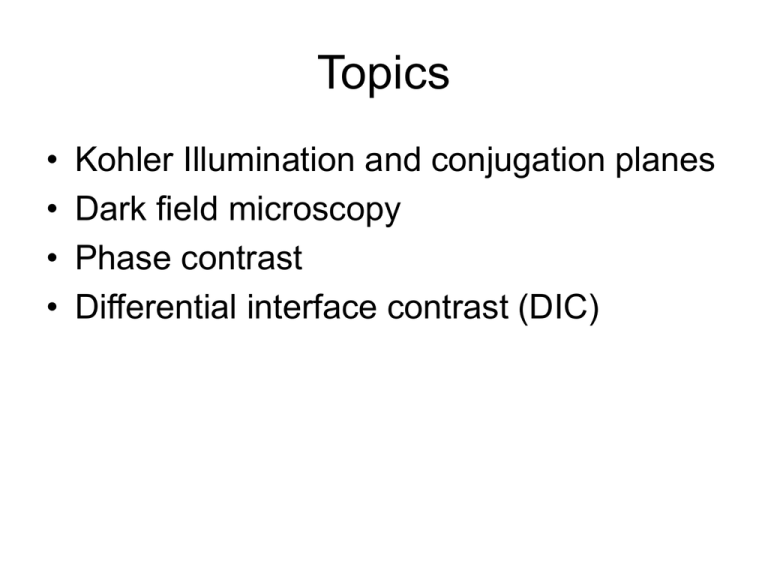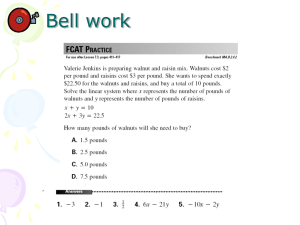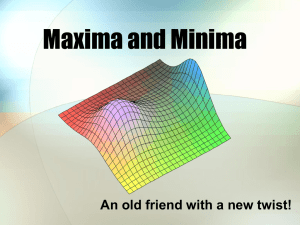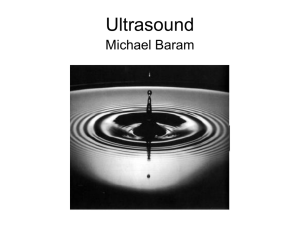Lecture 2. Bright field microscopy.
advertisement

Topics • • • • Kohler Illumination and conjugation planes Dark field microscopy Phase contrast Differential interface contrast (DIC) Conjugated Planes Eyepiece Condensor Objective Field Diaphgram plan Tube Lens Sample plane Image Planes Intermediate Image plane Eye Retina Condensor Objective Field Diaphgram plan Tube Lens Sample plane Image Planes Intermediate Image plane CCD chip How to avoid image formation -- the opposite of conjugated planes Collection lens Objective Field Diaphgram plan Lamp Plane Eyepiece Condensor Tube Lens Sample plane Aperture Diaphgram plane Back focal plane Eye Intermediate Retina Image plane Collection lens Condensor Objective Field Diaphgram plan Lamp Plane Tube Lens Sample plane Aperture Diaphgram plane Back focal plane Eye Retina Retina Objective Sample plane Back focal plane Close Aperture Smaller Light Cone Angle Smaller NA Less Resolution Darkfield Microscopy Collection lens Condensor Objective Field Diaphgram plan Lamp Plane Tube Lens Sample plane Aperture Diaphgram plane Back focal plane Eye Retina Retina Objective Condensor Aperture Diaphgram plane Sample plane Back focal plane Close Aperture Smaller Light Cone Angle Smaller NA Less Resolution Darkfield Microscopy Objective collects Only diffracted light Image plane Objective lens Specimen Condensor allows only high angle rays Stop in condenser Source Where is light in darkfield? Any refractive index change will scatter light. Scattering redirect light through objective lens. Comparison of bright and darkfield Brightfield Microscopy Darkfield Microscopy Contrast is reversed in these modalities Key Requirement of Darkfield: NA of Condendor > NA of Objective High NA darkfield condenser Visualize particles down to ~40 nm by scattering But not resolvable Darkfield Brightfield, High contrast Closed aperture Loss of resolution Darkfield, Red filter Phase vs Amplitude Effect of Path Length and Refractive Index Phase shift: Effective Pathlength: 2 1 2 / nL Amplitude vs Phase Objects Amplitude Objects: Cells with stains, pigments, absorb, scatter light, change its amplitude Most biological objects do not absorb white light But diffract, phase shift: phase objects But may be hard to see with contrast by bright field Use phase differences to visualize differences in refractive index: Phase contrast microscopy Nobel Prize in 1953: Zernike Interferometer: Convert Phase Amplitude Michelson interferometer Comparison of contrast in brightfield and phase Can see by brightfield, but phase much better Differential Interference Contrast Microscopy (aka Nomarski) Phase Contrast Microscopy: •Visualize specimens without labeling •Utilizes refractive index for phase differences •Measure thicknesses Phase Contrast Microscopy Illumination (zero order) Light diffracted by specimen Longer pathway Condenser annulus Condenser specimen Objective lens Phase rings Phase contrast: Kohler-same Conjugate planes as brightfield Condenser annulus replaces condenser variable diaphragm Objective has phase ring in Backfocal plane S wave projects bright image of annulus onto back aperture (Kohler illumination, conjugate Image planes) Diffracted waves traverse whole back aperture Surround waves undeviated Conversion of phase to amplitude Sample retards by λ/4 Phase ring retards by λ/4 (S advanced) S is advanced because Of recessed (shorter) path S,D shifted by λ/2 Combine and interfere destructively In image plane S,D different places in bfp Retarding Plate near Back focal plane Phase plate located near back focal plane Shaded to attenuate by 70% for more contrast Selectively manipulate either S,D wave components Advances or retards S wave relative to D wave With phase plate Path Difference between S,D Waves ~ λ/4 For individual cells in tissue culture, the optical path difference relative to fluid is relatively small: A typical cell in monolayer culture: thickness around 5 micrometers refractive index of approximately 1.36. The cell is surrounded by a nutrient medium: refractive index of 1.335 (n2 n1 )t Optical path difference Gives optical path difference of 0.125 micrometer, 125 nm Or λ/4 quarter wavelength (of green light). Subcellular structures (organelles) generate much smaller retardations. PHASE CONTRAST Phase Ring in objective Annulus in condenser in phase ¼ out of phase ½ out of phase destructive interference 2 forms on phase contrast: Positive and Negative Positive: S is advanced higher refractive index= Dimmer image, P is smaller More common Negative: S is retarded higher index= brighter image, P is larger Cells brighter against background Inverse contrast between The 2 modes Annuli must be perfectly aligned for best contrast Properly aligned Misaligned, blurred Differential Interface Contrast (DIC) microscopy Comparison of phase and DIC microscopy DIC Phase Contrast Phase: path length difference: denser:darker DIC: gradient, not quantitative DIC is form of Kohler illumination Without Wollastons, reduces to pol scopeCrossed polarizers Also need strain-free objective lenses: Like in pol scope Selects one polarization Wollaston splits (shears) into perpendicular polarized O,E rays. Located at condensor Front focal plane (Kohler) Shear axis is angle between wedges Recombine in second Wollaston (near Back focal plane) Need coherence for interference in image plane Analyzer in infinity region Between tube lens and objective: Crossed wrt to first polarizer: Cancels action if no change in Refractive index Non-retarded light is blocked by analyzer Differential Interference Contrast (DIC) Microscopy: uses birefringent prisms to separate light into ordinary, extraordinary components Measure refractive index gradients by relative Retardance of the two beams: no birefringence required in specimen Birefringent Prisms Glan-Thompson Wollaston Used in DIC From specimen Nomarski is modified: Small offset in wedges Beams combine before: Interference plane needs to be at Back focal (diffraction) Plane. Usually inside lens Nomarski eases alignment Positive Birefringence (quartz): ordinary ray faster, travel through More of the prism, waves “catch up” at exit air interface (regular Wollaston) Calcite has negative birefringence: above argument is opposite O,E Rays differentially retarded when different Optical Path Differences Exist in specimen OPD= (n2 n1 )t Bias is selective retarding of ordinary ray to increase contrast Symmetric oil droplets Maximum extinction along shear axis Sliding analyzing Wollaston changes phase relationship Of the two beams: change linear plane or ellipticity by path length By changing extinction across field of view: Pseudo 3d relief Bias increases contrast, bright, dark patterns on gray background http://micro.magnet.fsu.edu/primer/java/dic/imagecontrast/index.html Image Formation in DIC Microscopy Polarizer passes One component Exits prism Elliptically polarized Larger phase change More passed by analyzer More contrast No change in index: No image in a,b (assuming no optical path Different paths through Prisms compensate after second Difference in two spots) Bias through de Senarmount compensation: quarter wave plate Quarter wave plate, (λ/4) turns linear into circular or elliptical polarization Either between polarizer and condenser prism Or between objective prism and analyzer Then rotate analyzer Combining linear polarized light IN PHASE Linear Polarization OUT OF PHASE Elliptical Polarization Circularly Polarized Light • Decompose to linear polarized light with 1/4 phase shift. • No direction (always pass 50% through polarizer in dependent of polarizer orientation) • NOT the same as unpolarized light. • Can be converted back to linear polarized light with birefringent materials (1/4 wave plate). Combining circular polarized light Principles of Differential Interference Contrast (DIC) DIC turns optical path differences into amplitude contrast DIC is based on retardance introduced by optics-not specimen Different indices used to converts optical path, phase gradients (refractive index) to amplitude differences in the image Recall phase contrast measures actual optical pathlength DIC Not quantitative of actual refractive indices: only gradients Not indicative of actual topography OPD= (n2 n1 )t Orientation of Object relative to light polarization can give different images, information Perp to shear Parallel to shear Diatoms Water flea Gill ribs Fish scale Orthogonal features can be seen in each case Thick specimens in Phase and DIC Phase DIC hydrozoan Butterfly wing Tapeworm eggs DIC does better with thicker specimens Optical Sectioning is obtaining 3 dimensional Stacks of images plane by plane Volvox algae colony







